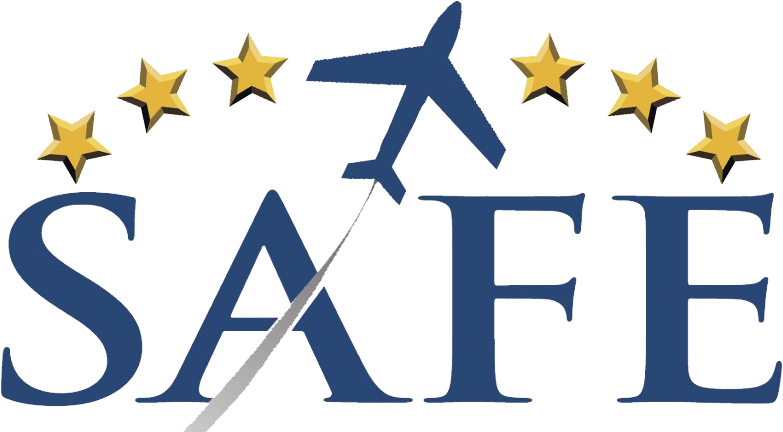This is from the road; if you are at the AOPA Fly-In at Tullahoma, TN. please stop by the SAFE booth and say hello.
CFR 121.423 requires “Extended Envelope Training” for all airline flight crews to combat Loss of Control-Inflight. Practicing outside of the “comfort zone” of ordinary, comfortable flying is good preparation for a surprise  encounter with upset. Unfortunately, this training has not been implemented (or even suggested) for GA flying except by SAFE. But since the average pilot only flies in an estimated 7-11% of the available flight envelope, “Extended Envelope Training” should be practiced for safety. These maneuvers are not aerobatic (or even close to it) and can be flown with an experienced CFI in any GA aircraft. For CFIs these are your tools. They are designed to keep your “flight chops” sharp!
encounter with upset. Unfortunately, this training has not been implemented (or even suggested) for GA flying except by SAFE. But since the average pilot only flies in an estimated 7-11% of the available flight envelope, “Extended Envelope Training” should be practiced for safety. These maneuvers are not aerobatic (or even close to it) and can be flown with an experienced CFI in any GA aircraft. For CFIs these are your tools. They are designed to keep your “flight chops” sharp!
This final rule [121.423] adds training requirements for pilots that target the prevention of and recovery from stall and upset conditions, recovery from bounced landings, enhanced runway safety training, and enhanced training on crosswind takeoffs and landings with gusts. Stall and upset prevention require pilot skill in manual handling maneuvers and procedures. Therefore, the manual handling maneuvers most critical to stall and upset prevention (i.e., slow flight, loss of reliable airspeed, and manually controlled departure and arrival) are included in the final rule as part of the agency’s overall stall and upset mitigation strategy. These maneuvers are identified in the final rule within the ‘‘extended envelope’’ training provision.
These maneuvers have been the subject previous blogs here (which are referenced below) and are designed to build skills and knowledge beyond the FAA minimums required for pilot certification. A more comprehensive program with sample flights will be presented for aviation edducators during the SAFE CFI-PRO™ Workshops.”Extended Envelope Training” is exciting and fun and and will make every pilot safer (and every CFI more effective). The “yaw awareness” maneuvers” should be part of every syllabus of training for a certificate. The stalls and turns are appropriate for later in private training and also for certificated pilots as an inoculation against LOC-I during a flight review.
1) Yaw canceling practice demonstrations: full power in and out while on a long runway to demonstrate yaw – Initial training – also during climb-out, raise the nose from level to Vx aggressively to demonstrate left yaw.
2) Climbing turns right and left (20 degree bank) to build pattern coordination skills and understand the need for “cross-coordination“
3) Level off >3000agl Pitch/accelerate/power reduction/trim (eyes outside: remove pressure- trimming could be a whole lesson for beginners) Vary power in level flight to illustrate yaw of power application.[reference]
4) Execute 30 degree bank turns 90 degree duration back and forth. Emphasize roll with eyes outside directly over the nose to sense yaw. (Be vigilant for “driving habit” of looking in direction of turn to clear then rolling the plane with the eyes on the wing)
5) “Dutch Rolls” left and right with eyes outside directly over the nose to see adverse yaw. If necessary demonstrate aggressive aileron only to show adverse yaw. This should be performed at progressively slower speeds with more adverse yaw. Also can be performed nose high on a cloud or low. [reference]
Yaw inducing maneuvers: slip/skid:
6) Horizon slide left and right with rudder; slow to approach cruise (top of white arc) and while maintaining wings level slide the aircraft nose L/R with rudder maintaining wings level with aileron (yes- skidding). [reference]
7) Normal stalls power on and off but let the nose of the aircraft fall through the horizon and recover with AOA reduction: aerodynamics 101
8) As above but in 30 degree banked turns, left and right.
9) Level at Vy initiate full slips left and right holding the nose on a point.
10) Steep Turn Reversals: start with 720s then 360/1 80 and finally 60 degrees bank reverse after 90 degrees turn ????
11) Teaching landings, demonstrating crab and slip for crosswinds: “Centerline Slow Flight”
 We will cover many other skills at the SAFE CFI-PRO™ workshop include the CFI as evaluator. We also cover “client-focused” flight training. We need to fix our 80% drop out rate during initial flight training.
We will cover many other skills at the SAFE CFI-PRO™ workshop include the CFI as evaluator. We also cover “client-focused” flight training. We need to fix our 80% drop out rate during initial flight training.
Join SAFE to support our safety mission of generating aviation excellence in teaching and flying. Our amazing member benefits pay back your contribution (1/3 off your ForeFlight subscription)! Our FREE SAFE Toolkit App puts required pilot endorsements and experience requirements right on your smartphone and facilitate CFI+DPE teamwork. Our CFI insurance was developed by SAFE specifically for CFIs (and is the best value in the business).
